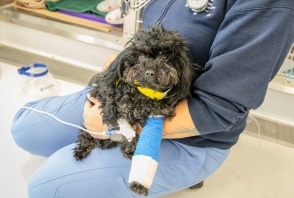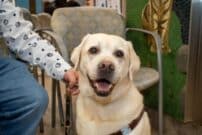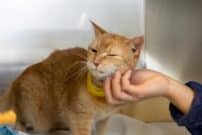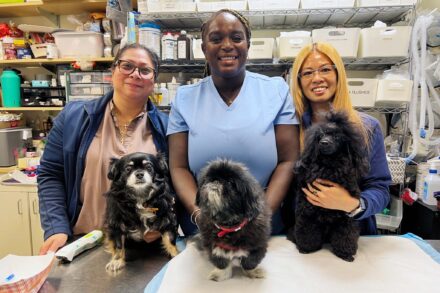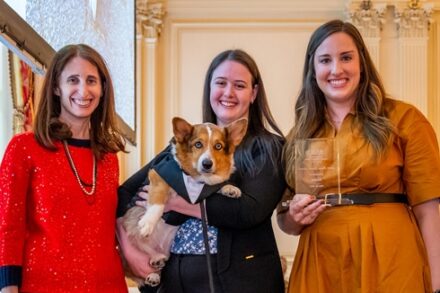Our History
Over 100 Years of Compassionate Care
1910
By 1910, the Women’s Auxiliary had grown to more than 120 members and had established itself as a strong force in the humane movement separate from the ASPCA. On May 12, 1910, Auxiliary members officially separated when they incorporated themselves as the New York Women’s League for Animals. Meanwhile, the number of animals needing treatment at the Lower East Side clinic was increasing significantly each year. It was decided that the newly-founded New York Women’s League for Animals would raise the funds for a permanent animal hospital that would be better staffed and equipped to treat more animals.
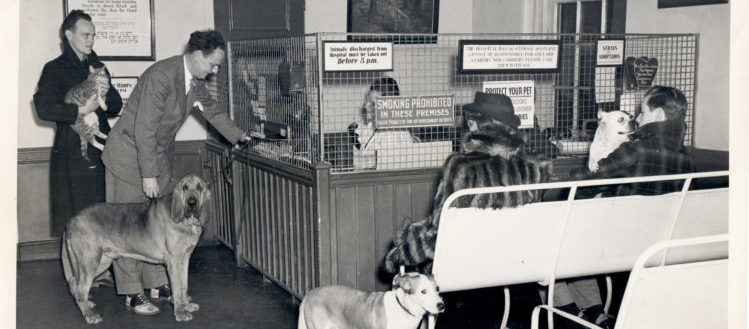
1914
The new animal hospital opened in 1914, just down the street from the original clinic’s location. The hospital was a new, three-story building equipped with offices, an examination room, a reception room, an emergency room for horses, operating rooms, a padded stall for horses, isolation wards, quarters for birds, and apartments for resident veterinarian, Dr. Bruce Blair, and his assistants. By 1920, the hospital was treating well over 9,000 patients annually.
1921
The hospital faced difficult times through the 20s and 30s, beginning in 1921 when founder and president, Ellin Prince Speyer, passed away. The Great Depression caused an explosion of sick and abandoned animals, as well as a rise in owners who could no longer afford to pay for their pet’s care and treatment. The League rose to this challenge, even increasing its service to the public through tight budgets.
1946
In 1946, the end of wartime shortages and price restrictions sparked a post-war inflation that hit the League hard. Despite its pressing finances, the League continued to advance in several new areas. The hospital benefited from new advances made in human and veterinary science, such as the discovery of powerful antibiotics like penicillin, and the development of vaccines for distemper and rabies. The League also implemented a mobile animal clinic in 1951 to supplement the work of the hospital. The mobile clinic rode through different neighborhoods treating the pets of the poor and teaching them about proper animal care.
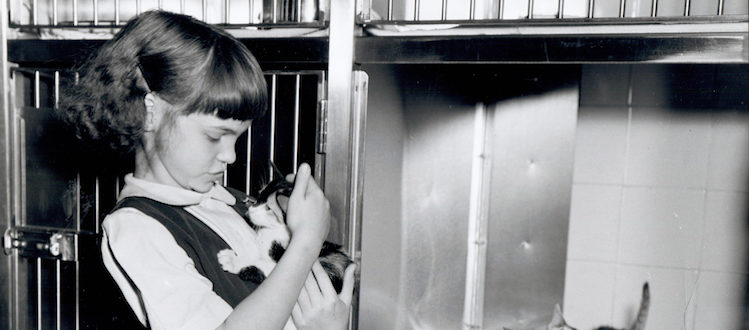
1954
In 1954, the League proposed to create an institute for veterinary studies. The institute would take the League’s mandate a step further by exploring the causes of animal disease and developing possible treatments. Thanks to the contribution of late League Director Margaret M. Caspary’s husband, it looked like the institute would become a reality. With the new Caspary Institute, the animal hospital evolved into a veterinary medical center of national stature. In 1959, the League voted to change the name to the Animal Medical Center, and thus the modern-day AMC was born.
1960
In January 1960, construction began on a new 4 million dollar facility for the Animal Medical Center on 62nd Street, just west of the East River. In 1962, the new building — which featured state-of-the-art laboratories, operating suites, and sophisticated medical equipment — threw its doors open to an expectant public, beginning a new era in veterinary medicine.
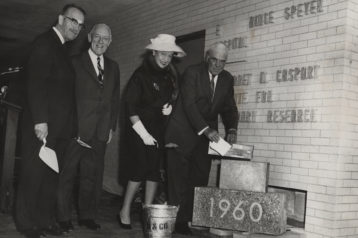
1960-1970
Throughout the 60s and 70s, AMC launched many new initiatives, including an intensive internship and residency program, a medical and surgical team concept that concentrated the energy and talent of several veterinarians on difficult cases, and an emergency medical service clinic open 24 hours a day, 7 days a week. AMC also greatly increased the size of its staff by increasing the number of vets from 20 to 70, hiring more veterinary technicians, initiating an animal aides program, and bringing in scores of attending physicians and veterinary consultants.
1983
By the 1980s, AMC had begun to set itself apart as an institute of higher learning as well. In 1983, AMC launched an intensive postgraduate course in clinical veterinary medicine. It also began to sponsor regular lectures and seminars, as well as clinical training programs for senior veterinary students, visiting veterinarians, and animal health technicians.
1980-1990
Throughout the 80s and 90s, AMC continued to grow its reputation as a leader in veterinary care by utilizing the latest medical technology, offering more specialized services and programs, and performing cutting-edge procedures.
1990-2000
Throughout the 90s, AMC set itself apart as a leader in oncology research and treatment. The oncology department introduced Strontium-90 plesiotherapy for the treatment of superficial tumors and a canine melanoma vaccine developed with Memorial Sloan-Kettering Cancer Center.
2000-2010
Over this time period, AMC added several pieces of groundbreaking technology. A linear accelerator enabled the radiation oncology staff to deliver radiation treatments in the fastest and most precise manner possible. The addition of a new Interventional Radiology (IR) and Interventional Endoscopy (IE) program offered new, state-of-the-art diagnostic and therapeutic capabilities.
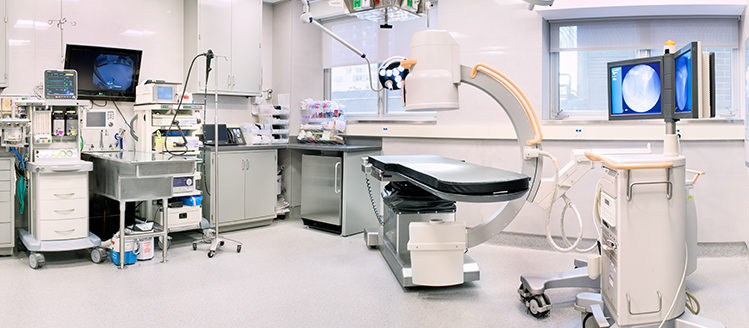
2010-Today
Today, AMC is the largest non-profit animal hospital in the world, treating 54,000 patients a year. A leader in compassionate care, research, and education, AMC currently runs the most prestigious post-graduate training program in veterinary medicine, and our clinical trials and research constantly seek to advance veterinary care. With more than 100 doctors across 20 specialties, AMC is poised to lead the way in veterinary care for the next 100 years!
From its humble beginnings in the mind of Ellin Prince Speyer to the world’s largest hospital for small animals, AMC has successfully positioned itself as a leading center for research, clinical advances, and veterinary medicine.



